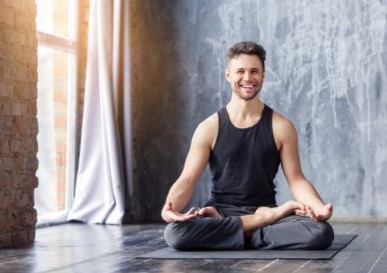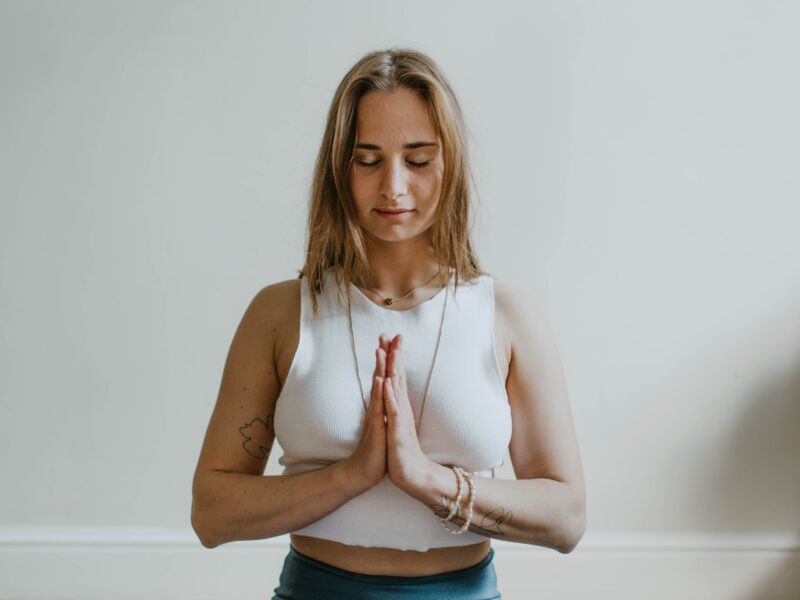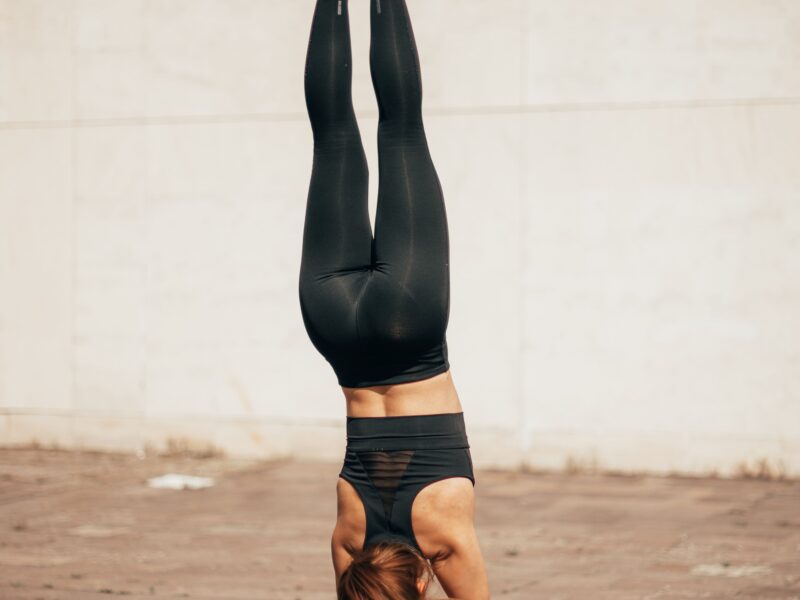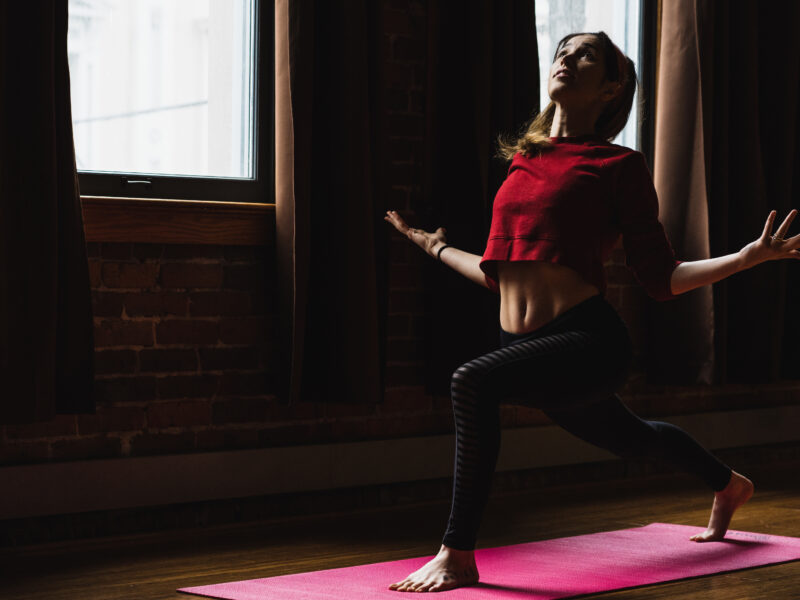It gets a bad rap, but your ego may be the key to happiness—if you know how to work with it.

By Nora Isaacs
After practicing for 10 years, mostly in beginning yoga classes, Gwen Merrill thought of herself as a pretty accomplished yoga practitioner. “I was able to do all of the postures and felt really confident in my ability,” says Merrill, a business consultant who lives in Northern California and describes herself as a recovering perfectionist. But when she went to an intermediate class and the teacher instructed the students to go into Headstand, she felt like the ground had shifted under her. Merrill had trouble balancing, experienced neck pain, and was unable to do the pose. “I went from someone who felt competent and capable to someone who felt totally incapable. I spent a lot of time comparing myself to the other students and thinking that I didn’t measure up.” To avoid practicing Headstand, she started leaving class early—or not attending at all.
Merrill’s experience is just one small example of how the ego, when left unchecked by an awareness of its inner workings, can get in your way. In fact, you likely experience the pull of the ego constantly but may be unaware of just how much it can block your path to happiness. By giving you the tools to observe your body, mind, and emotions, yoga’s teachings can help you identify when you’re at the mercy of your ego and pave the way for identifying with your true essence.
See your ego for what it is
At the most basic level, the ego is what allows you to differentiate yourself from others. A healthy ego gives you physical boundaries and a sense of self. But when it’s out of balance, your ego is what leads you to define yourself according to external qualities and circumstances, like your appearance, your house, or your job.
The ego is what makes you feel superior when you strike a perfectly balanced Warrior III, or like Merrill, feel inferior because some poses are beyond your reach. The ego persuades you to identify yourself as a flawless hostess or superstar yoga teacher, or conversely, makes you feel that you don’t measure up in these areas. Yoga’s soaring popularity on Facebook and Instagram may stoke these fires, leading you to pine over images of others’ pictureperfect arm balances, vacations, or wardrobes. In yoga circles, the ego has suffered from a bad reputation for centuries. The Gheranda Samhita, a yogic text written in the 17th century, says, “There is no fetter like illusion, no force greater than yoga, no friend greater than knowledge, and no enemy greater than ego.” In Patanjali’s Yoga Sutra, ego is the second of the five kleshas, or afflictions that lead to suffering, as outlined in the book’s second chapter. When yoga took hold in America in the ’60s and ’70s, ego was widely thought of as something to be eradicated in order to reach enlightenment. But you need your ego in order to function in the material world—and you couldn’t get rid of it even if you tried.
“We often use the term ‘ego’ as a synonym for negative qualities,” says Sally Kempton, international teacher of meditation, author of Meditation for the Love of It. “But ego is a function of consciousness; we can’t make it go away. We need to discern what kind of ego isn’t useful and what kind is.”
Identify the true you
In Sanskrit, one term for ego is ahamkara, which is defined as “I maker,” or “that which produces a sense of I-ness,” says Nicolai Bachman, a teacher of Sanskrit and yoga philosophy and director of Sanskrit Sounds in Santa Fe, New Mexico. Ahamkara is what allows you to see yourself as separate from others. In that sense, it’s something entirely natural. But a healthy ego becomes a problem when you identify too strongly with external aspects of your life at the expense of your internal, essential self. “The more attention you give the ego, the more powerful it becomes,” says Bachman. When this happens, ego becomes asmita, one of the five, pain-causing kleshas.
“According to Patanjali, asmita literally means ‘the thing other than the real I’ or ‘the false self,’ ” says Kate Holcombe, a San Francisco-based yoga teacher, and founder and executive director of the Healing Yoga Foundation. This false identification happens, according to Yoga Sutra II.6, when you mistake the mind, body, or senses for the true Self—in other words, when you believe that your thoughts, anxieties, successes, and failures are who you really are. It’s a pattern that leaves your happiness at the mercy of life’s ups and downs, and it’s one that yoga’s teachings are designed to address by helping you connect with your essence.
Stop the comparison
The first step is being able to see when your ego is getting in your way. The ego becomes problematic when your state of mind is dependent on your self-definition. For example, if you identify yourself solely by your job title or by your status as a parent, that’s your ego, as limiting klesha. When you feel superior or inferior to your neighbor or friend, or you get attached to flattery and attention, that’s unhealthy ego. It’s the part of you that bristles when you’re criticized, or feels inferior when things don’t go your way. The real hallmark of ego-as-affliction is that it always measures and compares itself to other people. Keeping up with the Joneses? A classic maneuver of the ego—and a recipe for unhappiness.
In the short term, when you’re caught in the thrall of the ego, you’re constantly measuring yourself by what you’ve accomplished—or haven’t. Similarly, your sense of self-worth waxes and wanes according to how others see you. Instead of being grounded in the knowledge that we’re all from the same essence, you’re constantly worried that you’re not enough.
Overindentifying with the ego causes unhappiness in the long term, too. You might see yourself as an accomplished yogi, but what if you get into a bike accident and can’t practice? How will you feel if you define yourself as someone who has a successful career or great relationship or a strong, healthy body, and then these circumstances change?
This is not to say that you can’t or shouldn’t enjoy your accomplishments, or get a lift from your successes, says Holcombe. “People think that practicing yoga means you’re supposed to relinquish desire,” she says. “But Patanjali says to relinquish the things that are obstacles that disturb the mind. You can enjoy having a beautiful home or a great asana practice. The problem comes if you can’t see the difference between that and your essence, the place of real value.”
Get your story straight
Think of your yoga practice as a guide for learning to notice when you’re gripped by your ego and to connect to your true, unchanging essence. Practices like asana, pranayama, and meditation are designed to help you quiet the mind and all of its rumblings so that you can, eventually, feel that you are pure essence. Even though you’ll still be pulled this way and that by your ego, being in touch with this truth will allow you to respond with more grace, more ease.
In your asana practice, observe your thoughts and sensations as they come and go. Notice which poses you love and which you hate. Notice the story your thoughts are telling you, and then practice letting it go. “One of the important things about asana is that it creates a habit of self-observation,” says yoga teacher Judith Hanson Lasater, a psychologist, physical therapist, and author of eight books about yoga. “When we stretch in the ritual of asana, our attention is drawn inward, toward the sensation of stretch.”
You can explore the same process with breathing practices, says Lasater. “As we become an observer of the flow of breath, we are drawn inward to notice, over and over,” she says. “This process of noticing our sensations can become a process of noticing ourselves in general. It spreads from the physical to the emotional and psychological. This is the beginning of freedom: freedom from our thoughts.”
Meditation is another powerful tool. Like asana and pranayama, it teaches you how to become an observer of your own mind. This allows you to become a witness to your thoughts and emotions, to tease out what your ego is telling you versus what your true self is saying. “You begin to recognize what in you is essential, as opposed to what you’ve acquired through culture or family or as part of your mask or persona,” says Kempton.
Cut yourself some slack
As you work to gain perspective on your ego, there are a few things to keep in mind. First, it requires tuning in to your feelings rather than ignoring them. “Getting in touch with the Self is not about trying to push away legitimate and real parts of ourselves like ego, like anger, heartbreak, or rage,” says Holcombe. “It’s about learning to live from our authentic self rather than from these other feelings and, in doing so, feeling better.”
Second, keep in mind that such inquiry is an ongoing, lifelong practice without a road map. It requires being gentle with ourselves, and we don’t always have to get it right. “We are human beings, and we are going to make mistakes,” says Holcombe. Even if your behavior doesn’t change—if you get defensive when a co-worker disagrees with you in a meeting, or if you feel inferior when a student doesn’t like your class— it’s still helpful to recognize that these feelings are your ego taking hold. “Just knowing that allows you to stop and reflect, and either let it go or, perhaps, respond differently if it happens again,” says Holcombe.
Gwen Merrill didn’t give up on her yoga practice; today, she says, she realizes that feelings of inadequacy don’t define her—and neither does the idea she had of herself as a perfect yogini. “It took a few years to learn to listen, for my inner voice to become louder than that external noise,” she says. “When it did, I accepted that Headstand just wasn’t good for me.” Instead of trying to please the instructor or compete with her neighbor, now when the class starts doing Headstand, she politely asks for another option—a telltale sign of an ego in check.
Nora Isaacs is a writer and editor in the San Francisco Bay Area.
This article was first published in the print edition of Yoga Journal Singapore, which is now Yogahood Online.







